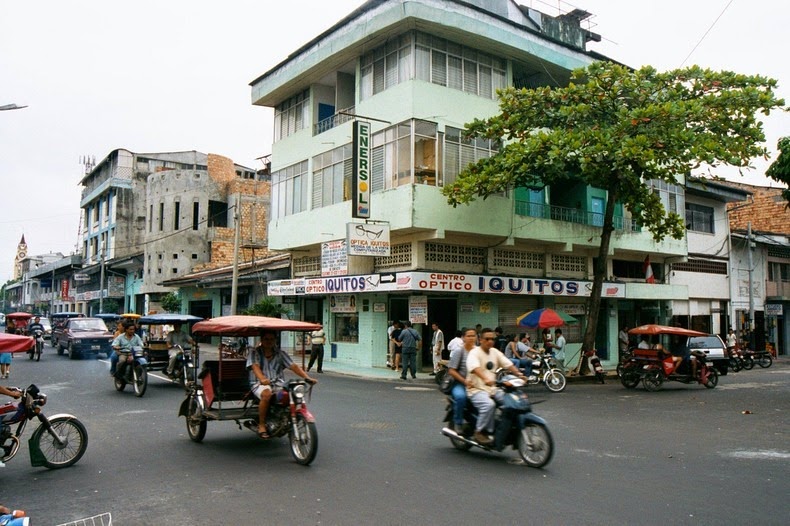Iquitos is an important port city of the Amazon and Peru’s largest jungle town. It is located in the Amazon basin at the confluence of the Nanay and Itaya rivers, about 3,700 km upstream from the Atlantic Ocean and 1,030 km north-northeast of Lima. Surrounded by water on one side and thick amazon rainforest on the rest, the only way to reach Iquitos is to either fly there, or travel by boat, which takes a full week of floating along the hot and humid Amazon. With a population of 422,000, it is the largest city in the world that is inaccessible by road.
The area was inhabited for thousands of years by natives and nomadic hunter-gatherers, who lived in small seasonal settlements close to the rivers, before European missionaries arrived and settled the local population around the rivers Nanay, Amazonas and Itaya. Some say the city was founded by the Jesuit missionaries in the 18th century; others claim that it actually was not founded until nearly a century later. In any case, the city did not start attracting settlers until the beginning of the 19th century when rubber was discovered. Thousands of immigrants from around the world, mostly young single men who hoped to make their fortunes in rubber, came and settled here. The rise of the automobile and related industries had dramatically increased the worldwide demand for rubber. Some men became merchants and bankers, and made their fortunes that way. Many of the European men married indigenous women and stayed in Peru the rest of their lives, founding ethnically mixed families. The immigrants brought European clothing styles, music, architecture and other cultural elements to Iquitos. The city became wealthy through its rubber industry throughout the rubber boom.
NASA satellite image showing the Amazon River Basin where Iquitos Metropolitan Area is located. The Amazon River appears on the lower side of the photograph. Photo credit
After 1912, rubber production dropped drastically, and the city’s population declined. Iquitos still bears traces of the extravagant taste of the rubber barons: mosaic tiles in Italian-style palaces, the bustling riverside walkway or the Iron House, a famous residence designed by Gustave Eiffel that was built from metal sheets and carried by hundreds of men through the jungle. Those great homes are now faded monuments to the city's glory days, and just blocks from the main square lies the shantytown of Belén district, where families live in a ramshackle wooden houses on the banks of the river. Some are propped up by spindly stilts, while others float, tethered to poles, when the river rises 6m or more.
Although unreachable by roads, the city is not without vehicles. Motorcycles and motocarros - a motorcycle with a small, rickshaw-like passenger cabin in the back – dominate the streets, whizzing manically around as if “an American style biker-gang had taken over a city”. Such is the noise and chaos.
Over 250,000 tourists came to visit Iquitos in 2012. For most visitors, the lure of the Amazon rainforest, that encroaches the city on all sides, is the primary attraction. Iquitos has a relaxed, intoxicating feel that's likely to detain you for a couple of days at least.
The district of Belen with its ramshackle houses. Photo credit
Motocarros or Tuk-Tuks in Iquitos. Photo credit

These houses float on the river. When the water level rises, so do the houses. Photo credit
Sources: Wikipedia / Frommers / Lonely Planet / WikiVoyage / Britannica






























I am hoping to visit Iquitos in the near future. These photos are beautiful!
ReplyDelete